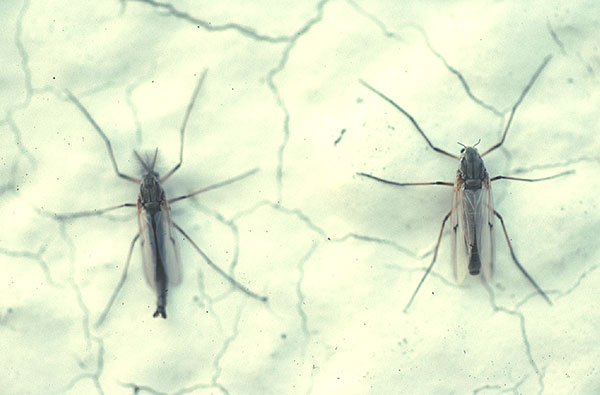Introduction
Chironomids are a group of small insects and mainly inhabit freshwaters. As the family Chironomidae is characterised by a large number of species which live in a wide variety of habitats, their relative levels of diversity are a good indicator of environmental quality of freshwaters. Furthermore, not only do they forage a wide variety of food resources, but they are also preyed upon by aquatic animals, including fish, as well as terrestrial animals, including birds and spiders - both of which are characteristics which indicate their important role in ecosystems in and around water bodies.
Due to their importance as environmental indicators and their ecological functions, chironomids have long been the subject of investigations. The difficulties involved in the identification of chironomid species have however proven an obstacle to the development of chironomid researches in the field of environmental monitoring and ecosystem conservation practice. Species identification is mainly carried out using adult male specimens, which are collected during their emergence period at certain times of year. Larval chironomids can easily be collected in abundant quantities from freshwater habitats. However, there are only slight morphological variations among species.
Recent developments in molecular genetic technology and GenBank databases have given rise to a means to overcome these difficulties: DNA barcoding. Based on species-specific variations in DNA sequences of common genes, it is possible to identify individual organisms which otherwise lack species-specific characteristics.

the late Dr.Manabu Sasa
The Chironomid DNA Barcode Database of NIES makes public our chironomid specimen records. Such records include the species name, DNA sequence of the COI (the mitochondrial cytochrome c oxidase 1 gene), collection details (date, place, etc), and photos. The chironomid study was initiated by NIES in the 1970s under the auspices of the late Dr. Manabu Sasa, the second President of NIES. Over 100 species of chironomids have been described over the course of the study, and the diversity and ecology of chironomids in Japanese freshwaters have been reported and analyzed in regards to eutrophication, acidification, and pollution by pesticides and heavy metals. This database is one of the outcomes of these accumulated undertakings by our institute. We hope that this database will contribute to researches on chironomids as a water environment indicator and ecological engineer.
Acknowledgments
We are thankful to Eiso Inoue, Yasue Inoue, Akifumi Ohtaka, Tadashi Kobayashi, Chiharu Komori, Tetsuro Sasaki, Kiyoshi Satake, Kimio Hirabayashi and Jon Martin for sample collection. This database was supported by JSPS KAKENHI Grant Number 24241078.



